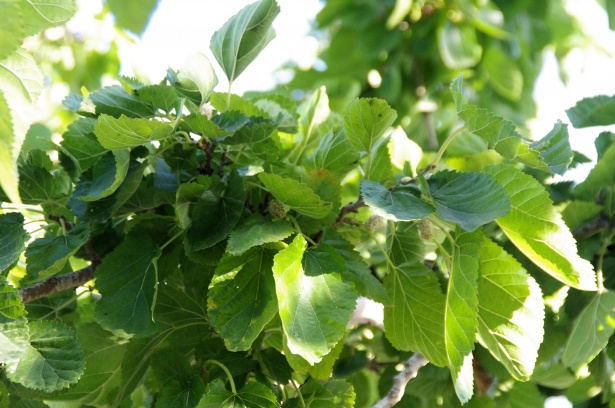I’ve been a farmer for over a decade-and-a-half now, but always eager to learn about plant chemicals, or phytochemical properties of plants, their fruits and flowers. In short, to determine whether their minerals could be harvested for plant nutrition. Over the years, I have also been able to identify certain phytochemicals while reading reams of literature and using them to benefit my orchard. I think most farmers are just as curious to exploring the possibility. These are organic alternatives to synthetic chemicals we use to feed our plants.
Plants produce many chemicals that are biologically active, not just in themselves, but also in other organisms. Some of these chemicals enhance their own survival.
Many plants have high levels of minerals because they can draw minerals from the soil and can convert them into a form that is more easily used by the human body. Mineral content is often the key factor in a plant’s effectiveness as medicine.
I have used calotropis leaves to cure boron deficiency in mangoes, fermented banana stem solution to harness potassium needs of turmeric and moringa leaf spray to enhance vegetable growth.
Useful Anti-Diabetic
My ever-present quest led me to mulberry leaf tea recently and I came to know that it is a useful ‘remedy’ to control Type-2 diabetes. I would not claim it to be my discovery: it’s mentioned in the Bhavprakash Nighantu, thousands of years ago, but has been ignored and overlooked by present-day physicians, who can’t think beyond prescribing metformin. By the way, the plant is known as Tula, Brahmadaru and Kramuka in Sanskrit. For years, medical journals and research studies have provided ample proof that blood sugar can be treated by Morus alba, or white mulberry.
I am no physician, but the following provides you with adequate evidence of what promise mulberry holds for diabetics.
The plant is rich in phenolics. The leaves contain flavonoids, artocarpin, cycloartocarpin and analogues. The root of the plant contains flavonoids, like kuwanons, sangennons, mulberrosides and mulberofurans. The small branches contain mulberrin, fructose, glucose, flavonoid, coumarin, arabinose, xylose, stachyose, sucrose. The fruit contains carotene, vitamins A and C, thiamine, riboflavin, tannin, linoleic and stearic acids. Most importantly, the leaf contains 1-Deoxynojirimycin [DNJ or 1-DNJ], also called duvoglustat, or moranolin — a useful alpha-glucosidase inhibitor, most commonly found in mulberry leaves.
An easy-to-grow plant, mulberry is propagated through cuttings and is grown in almost every part of India. With the number of diabetics ever-expanding, be it in cities, or villages, it would not be wrong to say that wherever there are diabetics you’ll find mulberry.
Yet, sadly, most diabetics are not aware that mulberry is a natural ‘panacea’ for their ills.
A fast-growing, small-to-medium-sized tree which grows up to 10-20m tall, the white mulberry is widely cultivated to feed silkworms employed in the commercial production of silk. It is also notable for the rapid release of its pollen.
Similarity Equation
Chemicals present in white mulberry work in a similar way to certain medicines used for Type-2 diabetes. They decelerate the breakdown of sugars in the gut, so that they are absorbed more leisurely into the blood. This helps the body to keep blood sugar levels in the desirable range.
The leaf extract of Morus alba [LEM] shows competitive inhibition to α-glucosidase. A single-blind, placebo-controlled study investigated the effects of LEM on post-prandial glucose and insulin levels in Type-2 diabetes patients treated with, or without sulfonylurea hypoglycaemic agents [SU]. Elevations in glucose and insulin levels were curbed and the excretion of breath hydrogen gas was markedly increased in healthy subjects after ingestion of a jelly containing LEM. The results suggest that LEM may subdue the post-prandial elevation of glucose and insulin-dependent [SU] treatment.
White mulberry is also used for treating high blood pressure, high cholesterol levels, common cold and its symptoms, muscle and joint pain, such as from arthritis, including constipation, dizziness, ringing in the ears, hair loss, and premature greying.
Taking 1gm of the powdered leaf three times a day for four weeks decreased fasting blood sugar levels by 27 per cent, compared to an 8 per cent decrease with the diabetes medicine glyburide, 5mg daily. In a small study of people with Type-2 diabetes, white mulberry leaf, 2gm taken three times daily for four weeks, reduced total cholesterol by 12 per cent, and LDL [‘bad’] cholesterol by 23 per cent, and increased HDL [‘good’] cholesterol by 18 per cent.
Taking white mulberry, along with diabetes medications, might cause your blood sugar to go too low. So, monitor your blood sugar closely. The dose of your diabetes medication might also need to be changed.
White mulberry leaf combats a brace of invisible enemies of high blood sugar levels, right at its core: the overactive lipids that may ‘hijack’ the pancreas causing the body to go into ‘defence mode;’ and, the irritated cells that may trigger inflammation.
White mulberry leaf with its healing properties offsets inflammation in your cells too.
A scientific review, published by the American Diabetes Association, declared that, “Studies have shown that ingestion of mulberry leaf produced significant reductions in blood glucose increases and maintained a healthy balance in the pancreas.”
Recommended Reading
- “Mulberry Leaf Extract Decreases Digestion and Absorption of Starch in Healthy Subjects: A Randomised, Placebo-Controlled, Crossover Study:” https://pubmed.ncbi.nlm.nih.gov/28501729/
- Mitchell Mudra, Nacide Ercan-Fang, Litao Zhong, MD, PhD, Julie Furne, and Michael Levitt, American Diabetes Association, February 3, 2007. Reprint requests to Michael Levitt, MD, Research Office, Minneapolis VAMC, 1 Veterans Dr, Minneapolis, MN 55414, USA.
- Journal of Drug and Food Analysis, December 1, 2017.
- “Administration of Mulberry Leaves Maintains Pancreatic Β-Cell Mass in Obese/Type-2 Diabetes Mellitus Mouse Model:” https://bmccomplementmedtherapies.biomedcentral.com/articles/10.1186/s12906-020-02933-4
- “Assessment of Morus alba [Mulberry] Leaves Extract for Anti-Psychotic Effect in Rats:” https://www.ijbcp.com/index.php/ijbcp/article/view

